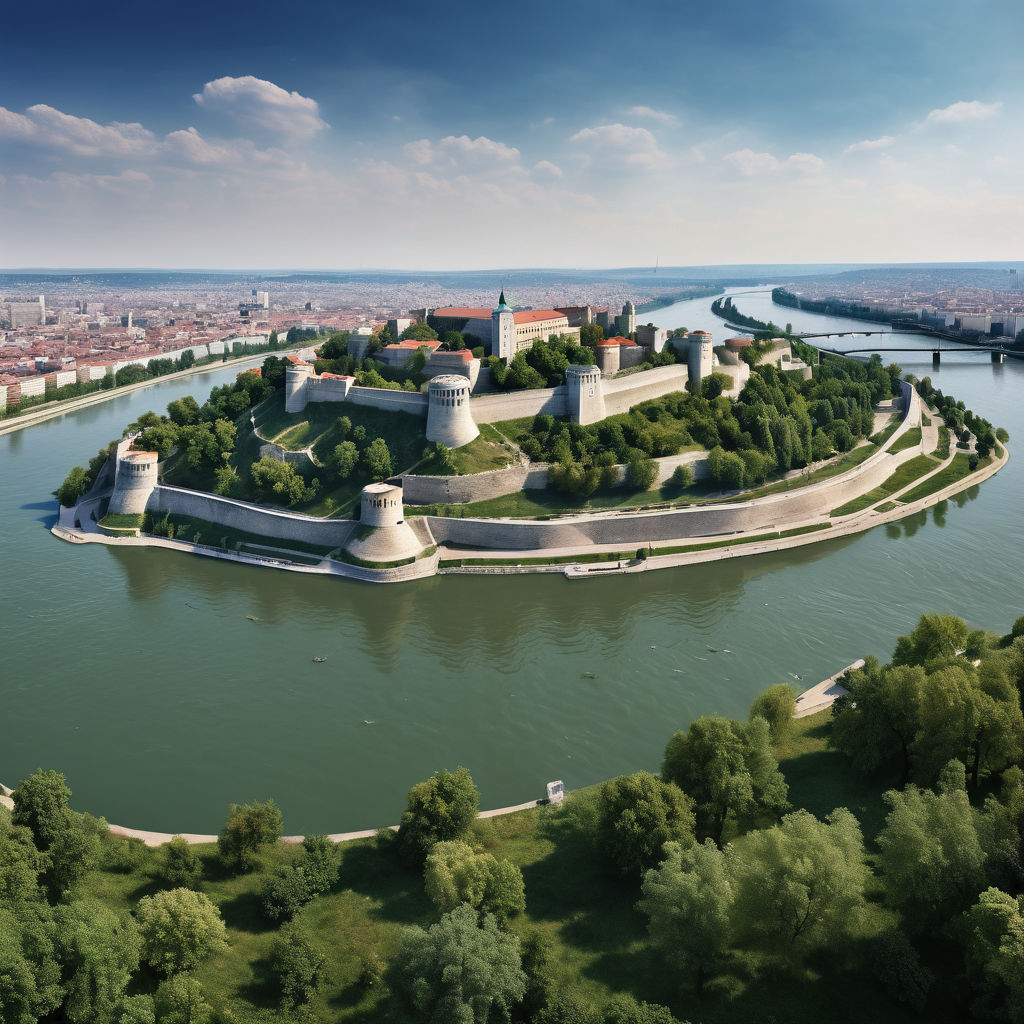Discover Serbia: A Crossroads of Cultures and Traditions
Explore Serbia's Rich Heritage and Vibrant Cultural Scene

Introduction to Serbia
Serbia, a landlocked country situated in the heart of Southeast Europe, is known for its rich cultural heritage and diverse landscapes. Bordered by Hungary to the north, Romania to the northeast, Bulgaria to the southeast, North Macedonia to the south, Croatia and Bosnia and Herzegovina to the west, and Montenegro to the southwest, Serbia is at the crossroads of Central and Southeastern Europe. The capital city, Belgrade, is a bustling metropolis that blends historical charm with modern vibrancy. Other major cities include Novi Sad, known for its cultural festivals and picturesque Petrovaradin Fortress, and Niš, one of the oldest cities in Europe with significant historical landmarks. Serbia's cultural heritage is a tapestry woven from its diverse history, including influences from the Byzantine, Ottoman, and Austro-Hungarian empires. This blend of cultures is evident in the country's architecture, cuisine, music, and traditions. Festivals such as the EXIT music festival in Novi Sad and the Guča Trumpet Festival celebrate Serbia's vibrant cultural scene and attract visitors from around the world.
Cross-national and Cross-cultural Understanding
Serbians generally perceive and engage with other cultures with openness and curiosity. This attitude is partly due to the country's historical position as a cultural crossroads. The Serbian people value hospitality and often go out of their way to make visitors feel welcome. This cultural trait, known as "srpska gostoljubivost," is deeply ingrained in the national psyche. Educational programs and international partnerships play a crucial role in promoting cross-cultural understanding in Serbia. Universities such as the University of Belgrade and the University of Novi Sad have numerous exchange programs with institutions around the world, fostering a global perspective among students. Additionally, cultural centers and embassies in Belgrade organize various events, workshops, and language courses that encourage cultural exchange and understanding. Programs like Erasmus+ have significantly contributed to cultural exchanges between Serbian students and their counterparts in other European countries. These experiences broaden the horizons of young Serbians and help them appreciate the diversity and commonalities among different cultures.
Interactions and Social Dynamics
Interactions between Serbians and foreigners are typically characterized by warmth and friendliness. Social behaviors in Serbia are often informal, and people tend to communicate directly and openly. This directness can sometimes be mistaken for bluntness, but it is generally rooted in a desire for honesty and clarity. Non-verbal communication, such as gestures and body language, is also an important aspect of social interactions in Serbia. A firm handshake and maintaining eye contact are common signs of respect and sincerity. Social gatherings often involve sharing food and drink, reflecting the importance of communal experiences in Serbian culture. Language plays a significant role in facilitating interactions between Serbians and foreigners. While Serbian is the official language, English is widely spoken, particularly among the younger generation and in urban areas. Many Serbians are multilingual, with knowledge of other European languages such as German, French, and Italian. This linguistic diversity enhances communication and fosters a more inclusive environment for international visitors.
Views on Dating and Relationships
Dating and relationships with foreigners are generally viewed positively in Serbia, particularly among the younger generation. Urban areas like Belgrade and Novi Sad exhibit more liberal attitudes towards dating, while more traditional views may persist in rural regions. Relationships with foreigners are often seen as an opportunity to learn about different cultures and broaden one's perspective. Cultural expectations and traditions still play a role in shaping attitudes towards dating. Family approval and respect for traditional values can influence relationship dynamics. However, as Serbia becomes more integrated into the global community, there is a growing acceptance of diverse relationship choices.
Marriage and Family
Marrying a foreigner in Serbia involves navigating both cultural and legal landscapes. Legally, there are no significant barriers to marrying a foreigner, but the process requires compliance with specific regulations, such as obtaining necessary documentation and meeting residency requirements. Socially, acceptance of cross-cultural marriages is growing, although some families may still express reservations. Family plays a central role in Serbian society, and gaining family approval is often seen as crucial for a successful marriage. Cross-cultural marriages necessitate a harmonious blending of different customs and traditions, which can be both enriching and challenging. Common practices in cross-cultural marriages include incorporating elements from both cultures into wedding ceremonies and family life, celebrating a range of traditions and customs.